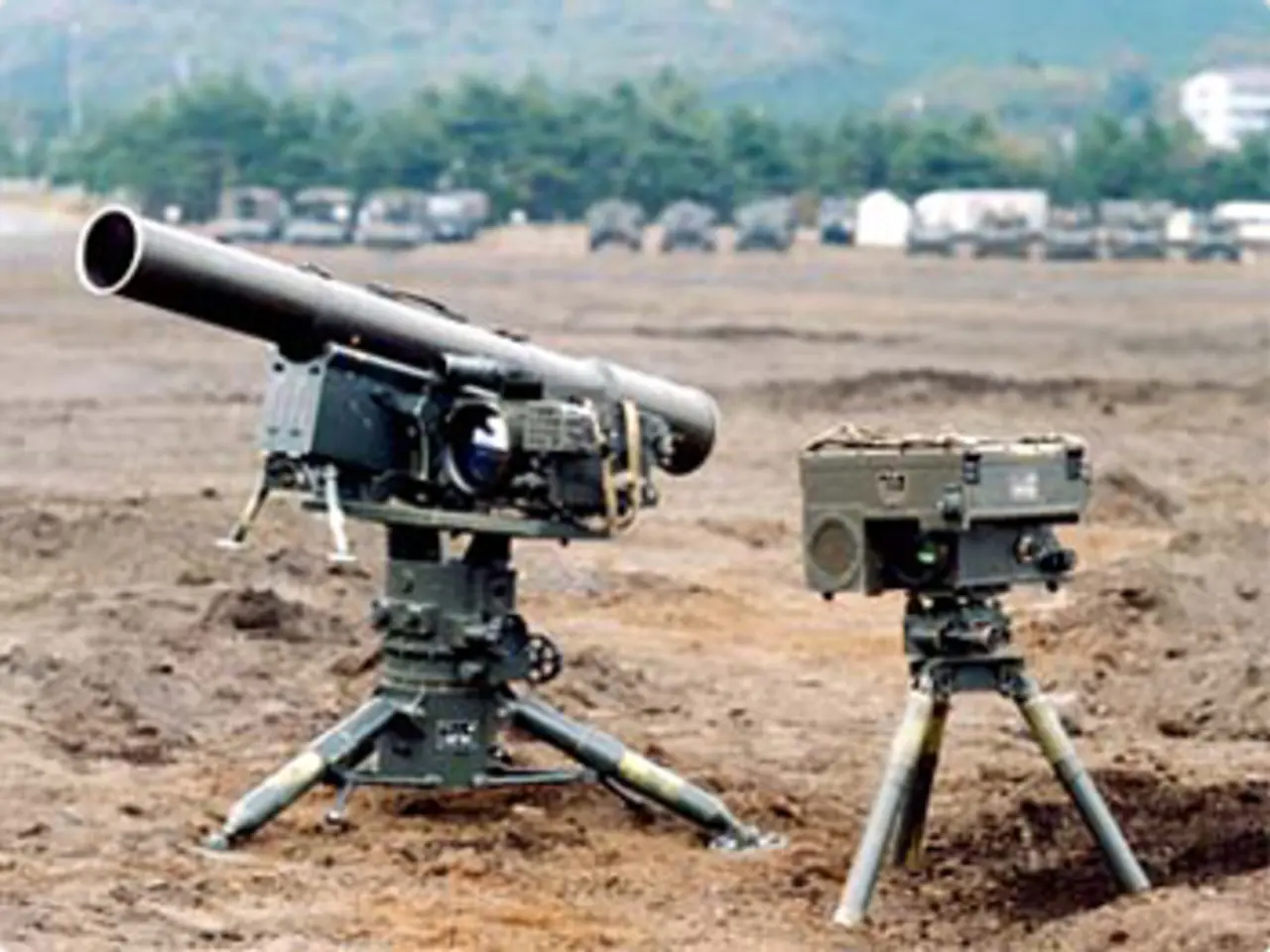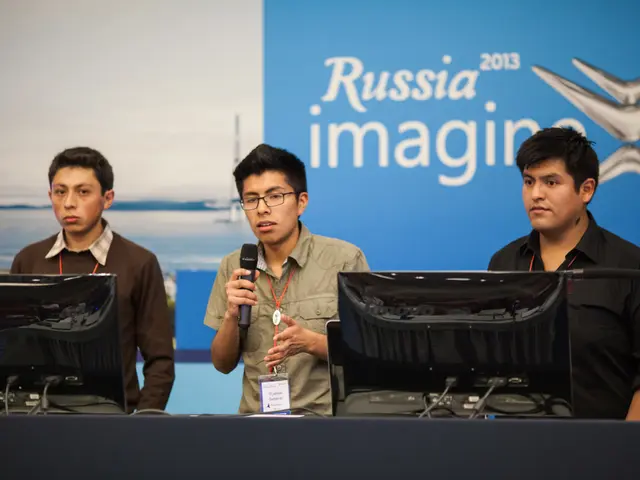Missile from Roketsan's PUSU system successfully strikes down unmanned aerial vehicle.
In a significant development for the defence industry, Turkish company Roketsan has announced the successful use of their Cirit laser-guided missile in an anti-air role. The missile, originally designed for close fire support, demonstrated its potential as a short-range anti-air weapon during a test.
Roketsan's CEO, Murat Ikinci, confirmed the success of the test, stating that the Cirit missile successfully hit the target during its first air-target engagement from the PUSU weapon system. The high-precision capabilities of the Cirit missile were emphasized by Roketsan's announcements and statements.
The test involved a simulated kamikaze UAV, and the Cirit missile was engaged successfully by the onboard AESA radar before intercepting the UAV. The missile used the vehicle's onboard electro-optical and infrared (EO/IR) targeting systems during the interception.
The potential platforms for integrating the Cirit laser-guided missile for anti-air roles include KAPLAN STA armored vehicles, T129 ATAK attack helicopters, and unmanned surface vessels (USVs) equipped with Roketsan’s KMC missile system. These platforms can carry and fire the Cirit missile, amplifying their anti-air operational capacity.
While the Cirit missile was not initially intended for air defense, its recent tests show effective UAV neutralization, suggesting adaptability for other vessels or vehicles with compatible launch and guidance systems. The KMC weapon system used on some platforms can carry up to eight Cirit missiles, significantly increasing their operational capacity.
The successful test opens opportunities for the integration of the Cirit missile on various platforms such as KAPLAN STA vehicles, USVs equipped with KMC systems, and T129 ATAK attack helicopters. Compared to Man-Portable Air-Defense Systems (MANPADS) and Self-Propelled Anti-Aircraft Guns (SPAAGs), laser-guided missile solutions offer enhanced mobility and sustainability.
The use of laser-guided missiles like Cirit against airborne threats is gaining global interest. This was evident in the Russo-Ukrainian War, where Ukraine deployed the L3Harris VAMPIRE counter-UAS system, utilizing APKWS missiles, to engage Russian UAV threats.
In a related development, the USAF successfully tested APKWS laser-guided rockets against cruise missile targets in 2019. The targeted UAV in the Cirit missile's demonstration resembled the Shaheed-136/Geran-2 kamikaze drone.
Roketsan continues to enhance the strength of armed forces with field-proven systems, according to their CEO. The successful test of the Cirit laser-guided missile in an anti-air role is a testament to their commitment to innovation and adaptability in the defence sector.
"The Cirit laser-guided missile, originally designed by Turkish company Roketsan for close fire support, demonstrated its potential as a short-range anti-air weapon, also showing effectiveness against UAVs. This development could potentially be integrated on various platforms such as KAPLAN STA armored vehicles, T129 ATAK attack helicopters, and unmanned surface vessels (USVs) equipped with Roketsan’s KMC missile system, when compared to Man-Portable Air-Defense Systems (MANPADS) and Self-Propelled Anti-Aircraft Guns (SPAAGs), laser-guided missile solutions offer enhanced mobility and sustainability."
"The use of laser-guided missiles like Cirit against airborne threats is gaining global interest, as shown in the Russo-Ukrainian War where Ukraine deployed counter-UAS systems, and in 2019, the USAF successfully tested APKWS laser-guided rockets against cruise missile targets. These advancements underline the commitment of defense companies like Roketsan to innovation and adaptability in the sector."




